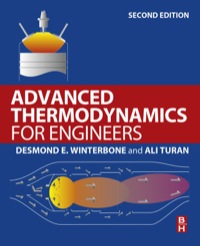Recalculate the diesel cycle in P16.6 using EQUIL2 to evaluate the conditions around the cycle. Do these
Question:
Recalculate the diesel cycle in P16.6 using EQUIL2 to evaluate the conditions around the cycle. Do these calculations both with and without considering dissociation. How has the use of more accurate data, and a better evaluation of the combustion process affected the results? Is the effect of dissociation appreciable? Explain your reasoning. [46.8\%]
P16.6
Compare the air-standard cycle thermal efficiencies of a diesel cycle obtained by calculating the state points around the cycle with the value obtained from Eqn (3.20) for an 'engine' operating with a compression ratio, \(r\), of \(15: 1\), and an air-fuel ratio, \(\varepsilon=28: 1\). The trapped conditions are \(1.0 \mathrm{bar}\) and \(27^{\circ} \mathrm{C}\). Assume \(Q_{p}^{\prime}=44000 \mathrm{~kJ} / \mathrm{kg}\), the specific heat capacity at constant volume, \(c_{\mathrm{V}}\), is \(0.721 \mathrm{~kJ} / \mathrm{kg} \mathrm{K}\), and \(\kappa=1.4\). The trapped conditions are 1 bar and \(27^{\circ} \mathrm{C}\).
[56.8\%; 55.4\%]
It has been suggested in Fig. 16.2 that it is possible to evaluate the thermal efficiency of a diesel cycle by considering it to be an infinite number of incremental Otto cycles. Examine the truth of this statement by dividing the diesel cycle into 10 incremental Otto cycles.
[56.7\%]


Step by Step Answer:

Advanced Thermodynamics For Engineers
ISBN: 9780080999838
2nd Edition
Authors: D. E. Winterbone, Ali Turan





